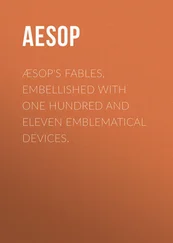Pamela Erens - Eleven Hours
Здесь есть возможность читать онлайн «Pamela Erens - Eleven Hours» весь текст электронной книги совершенно бесплатно (целиком полную версию без сокращений). В некоторых случаях можно слушать аудио, скачать через торрент в формате fb2 и присутствует краткое содержание. Год выпуска: 2016, Издательство: Tin House, Жанр: Современная проза, на английском языке. Описание произведения, (предисловие) а так же отзывы посетителей доступны на портале библиотеки ЛибКат.
- Название:Eleven Hours
- Автор:
- Издательство:Tin House
- Жанр:
- Год:2016
- ISBN:нет данных
- Рейтинг книги:4 / 5. Голосов: 1
-
Избранное:Добавить в избранное
- Отзывы:
-
Ваша оценка:
- 80
- 1
- 2
- 3
- 4
- 5
Eleven Hours: краткое содержание, описание и аннотация
Предлагаем к чтению аннотацию, описание, краткое содержание или предисловие (зависит от того, что написал сам автор книги «Eleven Hours»). Если вы не нашли необходимую информацию о книге — напишите в комментариях, мы постараемся отыскать её.
Eleven Hours
Eleven Hours — читать онлайн бесплатно полную книгу (весь текст) целиком
Ниже представлен текст книги, разбитый по страницам. Система сохранения места последней прочитанной страницы, позволяет с удобством читать онлайн бесплатно книгу «Eleven Hours», без необходимости каждый раз заново искать на чём Вы остановились. Поставьте закладку, и сможете в любой момент перейти на страницу, на которой закончили чтение.
Интервал:
Закладка:
Who can be blamed for this? The mother felt no symptoms. The labor nurse checked her and her baby’s vitals frequently. Dr. Elspeth-Chang ordered the routine number of ultrasounds — and ultrasounds do not always detect even advanced abruptions. Dr. Merchant followed the protocol of breaking the membranes of a woman whose advanced labor is progressing erratically.
What if there is no one at all to blame?
Lore’s veins are dehydrated, hard to locate. Franckline palpates for anything puny, slippery, rolling. She plunges in once and misses. No time left for error. She brings her attention to a fine point, locates a line, and goes in. “Let’s move,” says Dr. Merchant, and Franckline hooks up the bag of saline while running alongside the bed.
A young woman wearing a bed jacket, taking a break from the boredom of her labor room, flattens herself against the wall, alarmed, eyes dropping from the shrieking patient to the blood spattering onto the floor.
No scrubbing, just move it, and the catheter has to go in now , calls out Dr. Mankowitz, the attending, as they wheel into the ER. Lore’s screams when the catheter pierces the urethra will join the collection that appears in Franckline’s dreams sometimes, along with the ragged woman’s shouts of “Father!” at the cathedral in Port-au-Prince, and the silent spasms of the child who never actually cried, never made one sound of life.
Lore is rigid and fighting as they lift her onto the surgical table. She is powerful in her terror and her rage. The tech tears open Lore’s gown and the quick dump of Betadine turns her belly into a spreading orange-yellow stain. The oxygen mask is wrestled over Lore’s mouth and soon she is mercifully absent. We are coming , Franckline says silently to the baby within.
Dr. Mankowitz tells the anesthesiologist to intubate.
The tech calls out that the baby’s heart rate has plunged to 45 beats a minute. We are coming , repeats Franckline, to Lore this time. She and the tech put grounding pads under Lore’s thighs and tip her gently into position, a pillow under her right side. That’s right, you don’t even know we’re here. Sleep, sleep .
“Cut her vertically,” Dr. Mankowitz tells Dr. Merchant. The scalpel goes through the subcutaneous flesh and the fascia and into the peritoneal cavity. How quickly a body can be cut, how easily its innards exposed. Now the uterus. Franckline applies clamps to keep the walls open. The cavity is a sea of blood. She fights a tickle of nausea. Down beneath this blood is a creature, alive or dead, just as inside herself there is this same flesh, fat, fascia, blood, creature. She suctions while the tech sponges. Willfully she narrows her mind to the suction tube, the cavity dimensions, the rapid controlled movement of her tool. Her ears filter out all extraneous noise.
“That’s as good as we’re going to get,” says Dr. Mankowitz, and Dr. Merchant sloshes into the uterus like someone dropping his hands into a small, extremely dirty sink.
In a moment he has extracted the bluish rag of flesh, its eye sockets filled with blood and its ears tiny teacups of blood, blood thickly painted all along the torso and legs, but they can see that it is a girl. The tech suctions mucus out of the nose and mouth and the child shudders slightly. Imperceptibly, they all lean in: the child is alive; there is time and there is hope. Dr. Mankowitz cuts the great fleshy rope and the child is handed over to a NICU nurse, to be carried to the warmer and hooked up to an IV.
Dr. Merchant pulls out a ragged chunk of placenta.
“Zero, one, zero, zero, one,” calls out the NICU nurse.
The blood is still coming from Lore’s belly and from between her legs, soaking the sterile drapes, forcing Franckline to stop suctioning for a moment and replace the grounding pads. The uterus is not contracting, says Dr. Merchant.
“Where’s that A positive?” Dr. Mankowitz demands.
Franckline checks the monitor. Lore’s heart rate is rapid, 160 beats a minute, and her blood pressure is low. The uterus looks big and boggy, like a collapsed balloon. Dr. Mankowitz calls for Pitocin and Methergin. Suction, suction.
“I can’t wait. Get me some fucking O negative,” Dr. Mankowitz tells the circulating nurse.
“Good, good,” says Dr. Merchant, talking to himself, as Franckline suctions. He is removing smaller pieces of the placenta from the uterus, like a potter quickly but carefully scraping smooth the inside of a clay bowl. The blood transfusion begins. A breeze of expectation lifts up the little crowd — the thick red nourishment will work its magic. But Lore’s blood pressure still drops, and drops again. Franckline looks up and sees, like a shadow drawing away from a window, the soul retreat from Lore’s face. Oh, Jesus Christ my Savior, she thinks. Oh, Papa Ghede, save her. She hardly hears as the anesthesiologist calls out a Code Blue. She returns to her suctioning; she must think of nothing else. Beside her, focusing on his task too, Dr. Merchant scrapes.
Marina, pulled in for this purpose, is setting up the defibrillator, pressing the pads to Lore’s chest. One shock. Two. The line on the monitor jumps and then settles like a spent wave. Head down, suction, suction. A sizzle of pain in Franckline’s left ovary. Mapiangue and Papa Ghede, no. Protect the child.
“One, two, one, one, one,” calls out the NICU nurse. Franckline hears a tiny mewl. Or did she imagine? Do not think, suction, suction. In another few moments she is aware of the warming bed trundling past, the opening and shutting of the operating theater’s doors. The NICU voices disappear.
“Keep going,” Dr. Mankowitz tells Marina.
“She’s clean,” says Dr. Merchant.
“In fifteen seconds I’m going for a hysterectomy,” says Dr. Mankowitz. The heart pulse can be heard again, a bit stronger, but still thready, quick.
“Doctor, I think the bleeding is slowing. Give it another thirty seconds?”—Dr. Merchant. He is massaging the uterus with his hands to encourage it to draw up.
“The A positive is here,” says the circulating nurse, who is ignored.
Then — they all feel it, the absence of something, an abrupt quiet — Lore’s heart stops beating. Heads swivel to the monitor. “Keep going,” says Dr. Mankowitz again to Marina.
Again she shocks the girl. And again. The second time, Lore’s shoulders shudder and she gurgles as if trying to dislodge the tube in her throat. Her blood pressure reading ticks up: 55 over 30. Come back , calls Franckline.
“She’s passing a little urine,” says the anesthesiologist.
“Again,” says Dr. Mankowitz. With the next defibrillation they hear the heartbeat, though it is rapid, hounded. For long minutes they continue their work and wait. The hiss of the siphon, the squelch of the saturated sponges hitting the bucket. The irregular beeping of the machines. Franckline can see the uterus finally begin to pull closed like a drawstring purse. Dr. Merchant’s hands, continuing to massage, are steady, but she feels the tense heat rolling off of him.
Blood pressure 80 over 50. Heart 85 beats per minute. Thank you. Thank you, Papa Ghede. Thank you, Jesus Christ our Savior. Hold off death. Deny death. Death must not exist today. Blood pressure 90 over 60. Heart 75 beats per minute. Lore’s face goes from gray to pale; she is inhabited again.
“Okay,” Dr. Mankowitz finally says, straightening. “Sew her up.” The pace in the room slows. They have time to be careful now. Dr. Merchant dips and tugs with the surgical thread, creating neat dashes: twenty, twenty-five, thirty. There is no hurry. Gradually, Lore’s insides are returned to her privacy.
Moments later the anesthesiologist removes the breathing tube, and Franckline and the tech begin the process of cleaning Lore up. Patiently they wipe her with warm water and antibacterial pads, dry her. The bloody sponges sit in a tub, waiting to be counted, and the canister of Lore’s blood mixed with amniotic fluid will be measured, too, so that they will know exactly what came out of Lore’s body as well as what went in, what she lost to have this baby.
Читать дальшеИнтервал:
Закладка:
Похожие книги на «Eleven Hours»
Представляем Вашему вниманию похожие книги на «Eleven Hours» списком для выбора. Мы отобрали схожую по названию и смыслу литературу в надежде предоставить читателям больше вариантов отыскать новые, интересные, ещё непрочитанные произведения.
Обсуждение, отзывы о книге «Eleven Hours» и просто собственные мнения читателей. Оставьте ваши комментарии, напишите, что Вы думаете о произведении, его смысле или главных героях. Укажите что конкретно понравилось, а что нет, и почему Вы так считаете.












